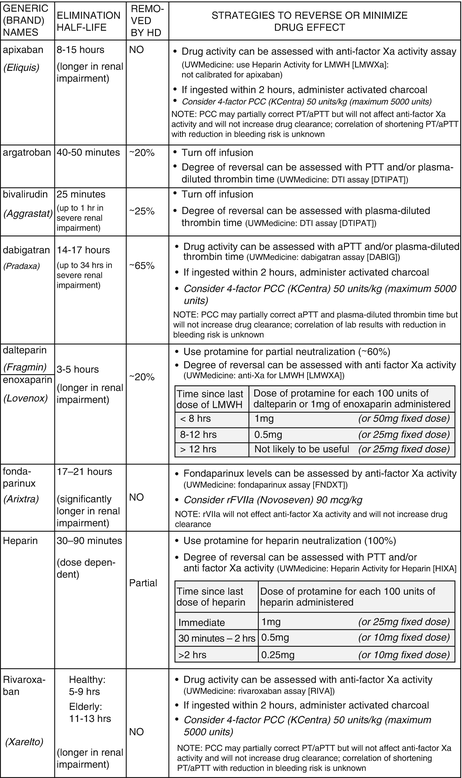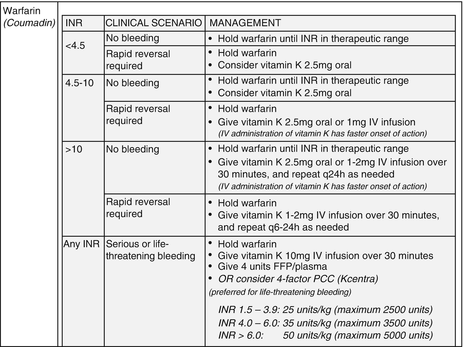Many minor procedures may be performed while on therapeutic anticoagulation due to lower bleeding risk and the ability for local control measures to obtain hemostasis (see Table 18.1). One should always discuss this with the surgeon. An INR should be checked to ensure that the patient’s anticoagulation is not supratherapeutic.
Cataract surgery | Stopping warfarin is usually not indicated |
Other ophthalmologic procedures | Should be decided on a case-by-case basis |
Dermatology | Stopping warfarin is usually not indicated unless the surgery is extensive |
Dental surgery | Stopping warfarin is usually not indicated except in very large cases or bone excision |
Consider adding an oral pro-hemostatic agent such as aminocaproic acid mouthwash postoperatively |
Strategies for Reversal of Common Anticoagulants
Consider whether the indication is for active bleeding or reversal for surgery and the time period over which you wish to reverse anticoagulation. See Fig. 18.2 for specific recommendations. Important points include the following:





